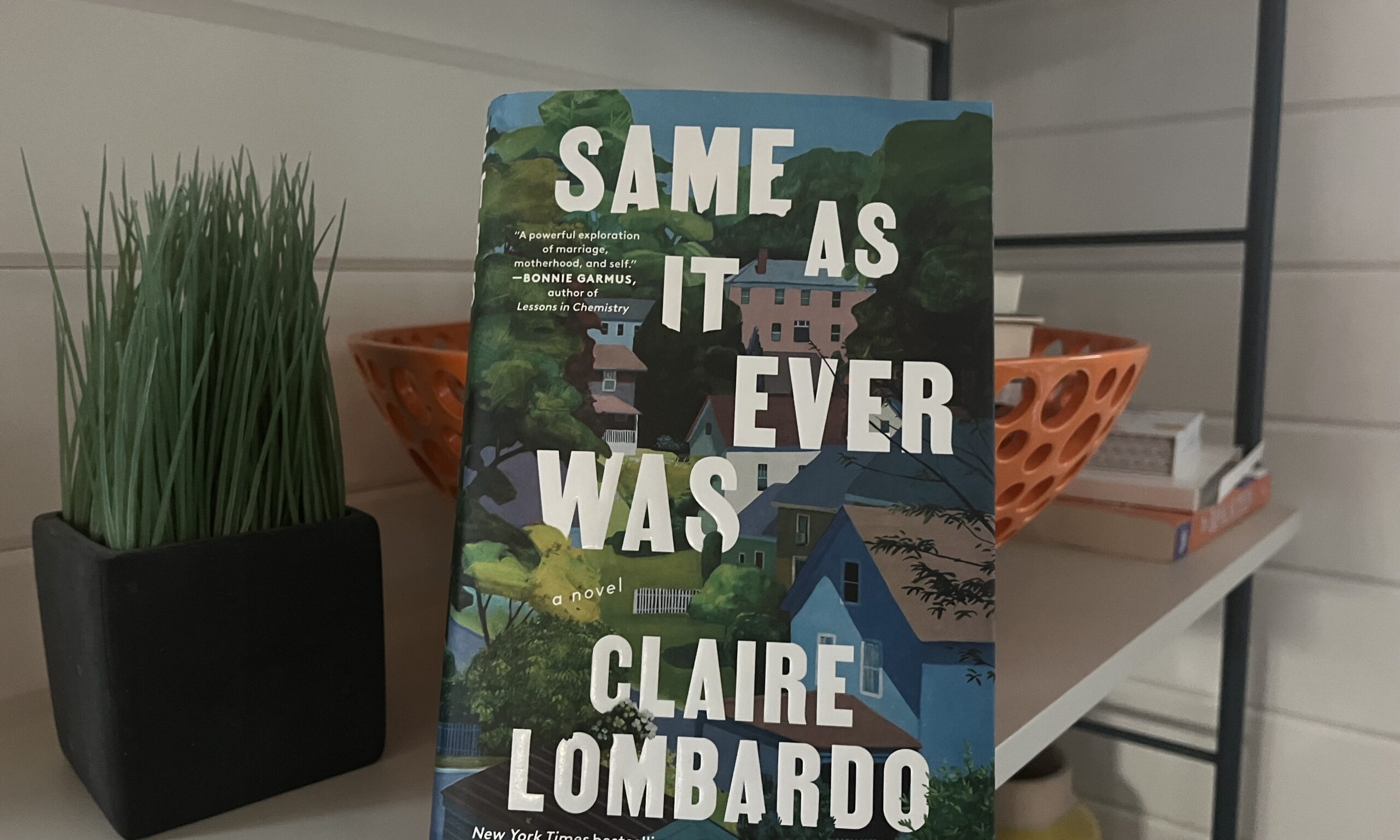In the 1980’s Talking Heads anthem “Once in a Lifetime,” songwriters David Byrne and Brian Eno capture the existential crisis that can sneak up on us in adulthood, snapping us out of our unconscious fog with the question: How did I get here?
Claire Lombardo’s novel Same As It Ever Was tackles this mid-life angst in her sweeping exploration of family dynamics and the relationships that shape us. Lombardo toggles back and forth in time with her protagonist Julia Ames. The novel begins with Julia at mid-life, a 57-year-old mother of two young adults, when a chance encounter with a woman from Julia’s past opens up a Pandora’s box of difficult memories. Lombardo then takes us back to 30-year old Julia, a new mother struggling with depression, isolation, and a yearning for something she can’t quite name.
This book is long—492 pp—and lags at times, but never enough for me to lose interest. It is thematically driven: motherhood, marriage, love, ambivalence, loneliness, unresolved trauma. The plot slowly unfolds Julia’s life choices—some good, some not so much—and her struggle to make sense of these choices. The book is a testament to the healing that can take place within a marriage. It is possible to recover from betrayal, especially if one is blessed with a partner like Julia’s husband Mark, a man who recognizes the parts of his wife that she actively tries to disown, and more importantly, loves her anyway. The book also touches on the complexity of female friendships: why we need them, how they change us, and how sometimes we have to let them go.
Julia is a complex character who at times can be frustrating and downright unlikeable. I don’t mind that in a character, because, really, who isn’t frustrating and unlikeable at times? Despite her tendency to self-sabotage, I found myself rooting for Julia as she struggles to get out of her own way. I think anyone who experienced postpartum depression or struggled to adjust to motherhood—I did, with my first daughter—will relate to at least certain aspects of this book. I had such empathy for Julia as a young mother: loving your child so much yet feeling that somehow you are failing all the time. Lombardo crafts a relatable scene where Julia’s young son Ben refuses to get out of the car at pre-school. He is melting down so intensely that Julia gives up and instead takes him to a botanical garden, where she proceeds to meltdown, albeit more subtly. I was reminded of the first time I tried to take my firstborn to a kids’ music class at a local church. It was a tough morning where everything was a battle: breakfast, teeth brushing, outfit selection. I eventually gave in and let her wear plastic princess heels from the dress-up box. I was in the same sweatpants from the day before. The minute we parked the car, it started pouring, and we stumbled into the class like two drowned rats. I sat next to a woman whose hair and makeup were perfect. Like, wearing-mascara-on-her-bottom-lashes kind of perfect. It was still raining when the class ended, and as I was stealing a few church bulletins to use as protection, I saw Mascara Lady donning her Burberry raincoat for which she had a matching Burberry umbrella. I cried in the car, thinking that I didn’t even own an umbrella, how was I expected to raise a child?
Now, almost 20 years later, I have much more empathy for my 28-year-old self. Throughout the course of the book, Julia slowly makes peace with her own specific brand of motherhood. Forgiveness—both of self and others—is woven into the fabric of this story. As Julia confronts her own childhood trauma, she learns to accept all the parts of herself—the parts that were wounded and the parts that did the wounding. When asked about the theme of “Once In A Lifetime,” David Byrne said the song was about “how we tend to operate on autopilot.” For me, this novel was about waking up and taking responsibility for your own messy life, but doing so with compassion. Because most of the time, we really are doing the best we can.




